Harnessing the Power of Community Engagement: Models, Examples, and Best Practices
Community engagement is not a one-size-fits-all approach. It requires active participation and collaboration from all stakeholders to create lasting change. As former President Barack Obama once said,
“Change will not come if we wait for some other person or some other time. We are the ones we’ve been waiting for. We are the change that we seek.”
Harnessing the power of community engagement is about empowering individuals to be agents of change and working together towards a common vision.
Community engagement holds a prominent place in the fabric of American society. The term community means a force that knits together individuals, cultures, and ideas in the quest to create better and more prosperous communities. By mobilizing local resources and capabilities, practicing community engagement allows for the realization of shared goals and visions.
Community engagement has myriad forms—public meetings, volunteer undertakings, fundraising events, and even online forums. However, the essence remains the same: the active public participation of individuals in their community to work collectively for common objectives.
Community engagement tactics play a crucial role in maximizing the impact of community engagement initiatives. A well-designed strategy provides a roadmap for effectively engaging community members, fostering cooperation, and achieving common goals. It outlines the methods, approaches, and tools that organizations and individuals can utilize to create meaningful connections and empower communities. A robust community engagement strategy ensures that initiatives are aligned with the specific needs and aspirations of the community, promoting inclusivity, transparency, and accountability. By integrating a community engagement strategy into their efforts, stakeholders can amplify the positive outcomes and create lasting change. In the following sections, we will explore real-life examples and best methods that demonstrate the power of community engagement strategies in action.
Why does Community Engagement Matter for US Citizens?
Over the last 20 years, community engagement has transformed not only local neighborhoods but also the entire country in profound ways. In the wake of natural disasters, economic downturns, or societal challenges, public participation has been the beacon that has illuminated the path forward.
According to a report by the Corporation for National & Community Service, volunteerism in the U.S., a form of public participation, rose by about 6% in the last two decades. This increase signifies millions of additional hours dedicated to addressing local issues and fostering community development.
Why is community engagement important? Several key benefits of community engagement have been observed:
- Strengthening Communities: Community engagement brings people together, helping to create stronger, more resilient communities. It fosters a sense of belonging and mutual responsibility, both essential for community cohesion.
- Addressing Common Needs: By involving residents in decision-making processes, community engagement ensures that the initiatives and agendas implemented are relevant and responsive to the community’s needs. It’s a bottom-up approach that allows for effective problem-solving and resource allocation.
- Fostering Collaboration and Trust: Community engagement provides a platform for dialogue, cooperation, and building trust among diverse society members. This promotes a sense of unity and mutual respect, essential for harmonious coexistence.
- Boosting Economic Development: Engaged communities are often more prosperous. Volunteerism, for example, provides valuable assistance and assets, reduces costs, and often leads to job creation. Involving residents in local planning and decision-making also promotes local ownership, encouraging residents to invest their time, money, and assets back into their communities.
Encouraging community involvement is crucial for the success of any community engagement initiative. By actively involving community members in decision-making processes, agendas, and events, we can foster cooperation, trust, and positive change. Encouraging community involvement not only strengthens the sense of belonging and mutual responsibility but also ensures that initiatives and agendas are relevant and responsive to the community’s needs.
Ready to take control of your community’s future? Discover and track ongoing projects in your neighborhood with Instant Input. Let your voice be heard – sign up now!
Community Engagement Examples
Communities across the U.S. have effectively utilized various forms of engagement initiatives to address their specific needs, leading to significant improvements in the quality of life for their residents, based on balanced and objective information. Here are a few examples:
Example 1: Community Development Corporations (CDCs) and Organizations
Community Development Corporations (CDCs) and organizations play a crucial role in fostering community engagement and improving the quality of life for residents. One exemplary CDC is Focus Syracuse, which actively involves its community members in identifying and addressing common issues in the Greater Syracuse area.
Brief Description
Community Development Corporations like Focus Syracuse exemplify the impact of community engagement at the local level. Focus Syracuse is a community-oriented organization that encourages citizen involvement in determining the actions needed to improve the quality of life in the Greater Syracuse area.
Objectives
The organization aims to involve residents in identifying, analyzing, and prioritizing community needs and implementing appropriate solutions.
Impact and Results
By actively engaging its community, Focus Syracuse has successfully launched various initiatives to address key community concerns, such as educational improvement, economic organizational development, and community health. It has encouraged increased public participation and accountability in local governance, leading to a more empowered and informed community.
Lessons Learned
This initiative underscores the need for local government authorities to partner with societies in maintaining public spaces and improving the overall quality of life.
Example 2: Fundraising Events

Fundraising events have emerged as a powerful means of engaging communities and harnessing local resources to support a common cause. These events not only raise funds but also foster a sense of shared responsibility and unity within the community. One notable example is the annual Boston Marathon Jimmy Fund Walk, a highly successful fundraising event dedicated to cancer care and research.
Brief Description
Fundraising events are an effective form of community engagement that mobilizes local assets for a common cause. For instance, the annual Boston Marathon Jimmy Fund Walk is a fundraising event that invites participants to contribute to cancer care and research.
Objectives
The objective of this event is not only to raise funds for cancer research and patient care but also to foster a sense of community and shared responsibility.
Impact and Results
The event has raised millions of dollars since its inception, significantly contributing to advancements in cancer research and patient care.
Lessons Learned
It has promoted a strong sense of community spirit, with thousands of participants walking together for a common cause.
Example 3: Community Outreach Programs
Community outreach programs are vital initiatives designed to address the needs of a community by providing essential services, resources, and education. These programs play a crucial role in tackling various social issues and promoting inclusivity.
Brief Description
Community outreach policies are designed to meet community needs by offering services, assets, or education. A prime example of this is the FeedMore Mobile Pantry program in Central Virginia.
Objectives
The Mobile Pantry program aims to tackle food insecurity in the community by delivering nutritious food to areas with limited access to grocery stores.
Impact and Results
The program serves thousands of households every year, significantly reducing food insecurity in the region. It also fosters community solidarity and awareness of the local issues of hunger and food access.
Lessons Learned
Community outreach programs like the FeedMore Mobile Pantry in Central Virginia play a vital role in addressing community needs, reducing food insecurity, and fostering solidarity within the community.
Example 1: Community Clean-Up Initiatives
Community clean-up initiatives mobilize residents to come together to clean up public spaces, such as parks, beaches, and streets. An example of this is the “Adopt-A-Street” program in Seattle.
Brief Description
The Adopt-A-Street program in Seattle allows community members, businesses, or organizations to adopt sections of a street for regular clean-ups. The initiative is supported by the city, which provides clean-up supplies and waste removal.
Objectives
The objectives of the Adopt-A-Street program are to maintain clean and safe public spaces, promote environmental stewardship, and foster community pride and cooperation.
Impact and Results
The initiative has been successful in reducing litter on streets and improving the aesthetic appeal of the city. It has also fostered a sense of community responsibility and pride in maintaining a clean environment. Participants have reported increased community spirit and cooperation as they work together to develop their neighborhoods.
Lessons Learned
The success of the Adopt-A-Street program shows that when societies are empowered and given the necessary support, they can effectively address local challenges. It also demonstrates the power of collective action in fostering positive change and a sense of communal ownership and pride.
Example 2: Neighborhood Town Hall Meetings
City council meetings are a traditional form of participation that brings residents together to discuss community issues, voice concerns, and contribute to decision-making processes.
Brief Description
Neighborhood city council meetings, such as those regularly held in Boulder, Colorado, involve residents, community leaders, and city representatives. These meetings provide a platform for dialogue and decision-making on a variety of local issues, ranging from infrastructure undertakings to safety concerns.
Objectives
The objectives of these town hall meetings are to involve residents in decision-making processes, address community concerns, foster transparency, and promote a sense of community.
Impact and Results
Through these meetings, Boulder has been able to create a participatory environment that values the input of its citizens. Community concerns are promptly addressed, and city policies are shaped with direct input from residents. This practice has led to increased community satisfaction, enhanced trust in local governments, and promoted a sense of shared responsibility for community well-feeling.
Lessons Learned
The success of Boulder’s neighborhood town hall meetings highlights the importance of inclusive decision-making in community participation. They demonstrate that when residents feel heard and involved, they are more likely to contribute to their community’s well-feeling. Furthermore, these meetings emphasize the role of transparent and open communication in building trust and fostering a sense of community.
Example 3: Local Fundraising Events
Local fundraising events play a critical role in community engagement, often mobilizing assets for a specific cause while fostering a sense of communal unity.
Brief Description
An excellent example of a local fundraising event is the annual “Relay For Life” organized by the American Cancer Society. This event, held in communities across the country, is a team fundraising event where participants take turns walking around a track or designated path. Each event is 6-24 hours in length and each team is asked to have a member on the track at all times to signify that cancer never sleeps.
Objectives
The primary objective of Relay For Life is to raise funds for cancer research and patient support services. However, it also aims to increase cancer awareness, celebrate the lives of survivors, remember those lost to the disease, and unite communities in the fight against cancer.
Impact and Results
Relay For Life has grown to be the largest fundraising event for cancer in the world. In the U.S. alone, it has raised billions of dollars for cancer research and patient support services. Beyond this, the event has fostered a sense of community solidarity and has given hope and support to countless individuals affected by cancer.
Lessons Learned
The success of Relay For Life demonstrates the power of community engagement in addressing pressing societal issues. It shows how coming together for a common cause can not only mobilize significant resources but also create a sense of community solidarity. It underlines the important role local events play in raising awareness, fostering community spirit, and making a meaningful difference.
Example 4: Community Gardens

Community gardens are spaces where community members of a neighborhood come together to cultivate plants, often fruits, vegetables, and flowers, fostering both biodiversity and community ties.
Brief Description
Detroit, Michigan’s urban farming initiatives are an inspiring example of community gardening. The city has transformed vacant lots into verdant community gardens, such as the Lafayette Greens Garden, to promote urban agriculture.
Objectives
The primary objectives of these community gardens are to repurpose vacant urban land, promote local food production, provide fresh produce to residents, and encourage community interaction and cooperation.
Impact and Results
Detroit’s urban farming initiatives have proven to be a significant success. They have transformed hundreds of vacant lots into productive green spaces, providing fresh produce to communities that previously lacked access. These gardens have not only improved the urban landscape aesthetically, but also fostered strong community ties, promoted healthier diets, and provided educational opportunities for residents about sustainability and nutrition.
Lessons Learned
The success of Detroit’s community gardens demonstrates the transformative power of community engagement. When people come together to cultivate gardens, they don’t just grow plants – they also cultivate stronger relationships and a deeper sense of shared responsibility. These initiatives highlight the potential for urban agriculture to develop food security, promote sustainability, and create healthier, more connected people.
Want to influence the development of your community? Join Instant Input and be a part of the decision-making process for projects that matter to you. Click here to get started!
Example 5: Education and Literacy Programs
Education and literacy programs are essential community engagement initiatives that aim to improve educational outcomes and promote lifelong learning.
Brief Description
One such program is the Literacy Partners program in New York City, which provides free literacy classes to adults and families with young children. This program helps adults improve their reading and writing skills, assists them in obtaining their High School Equivalency diplomas, and teaches them English as a new language.
Objectives
The primary objectives are to promote adult literacy, provide opportunities for lifelong learning, and ultimately break the cycle of poverty and illiteracy.
Impact and Results
Since its inception, Literacy Partners has helped thousands of adults improve their literacy skills. The organization has shown that adult literacy education has a multi-generational impact, as parents who participate in the program are more likely to read to their children and engage in their education, thus improving their children’s academic outcomes as well.
Lessons Learned
The success highlights the power of community engagement in addressing systemic issues like illiteracy and poverty. The program shows that when people invest in the education of all participants, they can break cycles of poverty and improve the overall quality of life. It also underscores the importance of lifelong learning in personal and societal growth.

Example 6: Community Health Fairs
The population health fairs are events that aim to improve public health outcomes by providing free or low-cost health services and education to residents.
Brief Description
An example of such an event is the Annual Community Health Fair in Houston, Texas. This fair provides a variety of free health screenings, consultations with health professionals, and informational sessions about health-related topics.
Objectives
The objectives of this health fair are to increase access to essential health services, promote health education, and improve overall community health.
Impact and Results
The Annual Community Health Fair in Houston has served thousands of residents, providing them with free health screenings and invaluable health information. This has led to the early detection and management of various health conditions and has educated residents about health maintenance and disease prevention.
Lessons Learned
The success of the Community Health Fair demonstrates the importance of community engagement in promoting public health. Such events not only provide essential health services but also foster a culture of health consciousness in the community. They illustrate the power of community-led initiatives in bridging healthcare gaps and promoting health equity.
Example 7: Volunteer Firefighter/First Responder Programs
Volunteer firefighters and first responders play a crucial role in community safety, providing vital emergency services in times of need.
Brief Description
The Volunteer Firefighter programs found in small towns and rural areas across the U.S are essential to providing vital community services. In many of these areas, volunteer fire departments are the backbone of the community’s emergency response system.
Objectives
Volunteer firefighter and first responder programs seek to provide an immediate response to emergencies, protect lives and property, and promote community safety and preparedness.
Impact and Results
Volunteers have been instrumental in providing rapid and efficient responses to emergencies, saving countless lives, and reducing property damage in communities throughout the United States. These programs also foster a strong sense of community spirit, as residents volunteer their time and skills to protect their neighborhoods.
Lessons Learned
The success of these programs illustrates the immense value of community engagement in promoting safety and preparedness. They demonstrate the power of local citizens in mitigating risks, responding to emergencies, and safeguarding their communities. These programs also highlight the role of training and ongoing support in enabling volunteers to effectively serve their communities.
Example 8: Youth Mentorship Programs
Youth mentorship programs play a critical role in shaping young individuals’ futures by providing them with guidance, support, and inspiration.
Brief Description
An example of a successful mentorship program is Big Brothers Big Sisters of America. In this program, adult volunteers, “Bigs,” build long-term supportive connections with young people, “Littles,” providing them with guidance and companionship.
Objectives
The objectives of Big Brothers Big Sisters are to help children and youth achieve their potential, build their futures, and improve their confidence. The program also aims to strengthen communities by fostering connections that can transform children’s lives and the lives of the mentors themselves.
Impact and Results
Big Brothers Big Sisters has made a significant impact on the lives of millions of young people. Participants in the program are more likely to avoid risky behaviors, perform better in school, and have stronger connections with their families and peers. The program has not only transformed the lives of the participants, but it has also enriched the lives of the volunteers.
Lessons Learned
The success of Big Brothers Big Sisters demonstrates the power of mentorship and the profound impact of one-on-one support. It underscores the importance of positive role models in young people’s lives and shows how mentorship agendas can foster a strong sense of community and mutual support. The program also highlights the reciprocal benefits of mentorship, as both mentors and mentees can learn and grow from the relationship.
Become a part of our mission to enhance the fabric of our communities. Join Instant Input today and ensure everyone has an equal say in shaping our shared future.
Example 9: Public Art Initiatives – Engaging Communities through Creativity
The International Association for Public Art projects, supported by government agencies, is instrumental in enriching the cultural landscape of a community, fostering local identity and promoting social cohesion. The Philadelphia Mural Arts Program is a leading example of sustainable outcomes in public art.
Brief Description
The Philadelphia Mural Arts Program is a leading example of successful public art projects. This program commissions and curates local artists to create murals that reflect the city’s culture and history.
Objectives
The program aims to empower artists, transform public spaces, stimulate dialogue about critical issues, and build bridges of comprehension among people by providing them with the opportunity to create and maintain public art.
Impact and Results
Since its inception, the Philadelphia Mural Arts Program has created over 4,000 works of public art, transforming the cityscape and strengthening community bonds. The program has become an integral part of the city’s identity, fostering a sense of community pride and cultural appreciation.
Lessons Learned
The success of the Philadelphia Mural Arts Program highlights the power of community participation in the realm of public art. It shows that involving local artists and community participants in the creative process can lead to meaningful and impactful artworks that reflect the values and aspirations of the community. These initiatives demonstrate how art can be a catalyst for dialogue, social cohesion, and community pride, while also addressing important community issues.
Example 10: Disaster Preparedness Training
Disaster preparedness training initiatives are essential in equipping communities with the knowledge and skills needed to effectively respond to and recover from disasters.
Brief Description
The Community Emergency Response Team (CERT) program is a notable example of community-based disaster preparedness. Run by FEMA, CERT educates volunteers about disaster preparedness for hazards that may impact their area and trains them in basic disaster response skills, such as fire safety, search and rescue, team organization, and disaster medical operations.
Objectives
The primary objectives of the CERT program are to promote a culture of disaster preparedness, provide practical training in disaster response, and facilitate community resilience in the face of emergencies.
Impact and Results
The CERT program has been highly successful, with thousands of active teams across the U.S. These teams have played a crucial role in local disaster responses, assisting in evacuation operations, providing first aid, and aiding in recovery efforts. The program has also fostered a strong sense of community resilience and collective responsibility.
Lessons Learned
The success of the CERT program underlines the importance of community engagement in disaster preparedness and response. It highlights the role of practical skills training in enhancing community resilience and emphasizes the value of coordinated community response in mitigating the impacts of disasters. It also showcases the power of volunteerism in strengthening community ties and fostering a shared sense of responsibility for community safety.
Main Models of Community Engagement

Community engagement can take many forms depending on the goals, the community involved, and the issue at hand. Here are some common models of community engagement:
Consultation
This model involves seeking input and advice from participants on a particular issue or decision. For example, a city council might consult with residents about the proposed development projects in their neighborhood, soliciting their views through surveys or public meetings.
Collaboration
In the cooperation model, participants work together with organizations or decision-makers to achieve a common goal. An example of this is the Restorative Justice Program in Oakland, California, where law enforcement, schools, and participants collaborate to resolve conflicts and reduce school suspensions and expulsions.
Empowerment
This model aims to give community members the tools and assets they need to effect change. One example is the Harlem Children’s Zone, a non-profit organization in New York City that empowers members by providing comprehensive support services, including education, social service, and health programs, aimed at breaking the cycle of poverty.
Service
In the service model, individuals or groups volunteer their time and skills to benefit their community. Examples include volunteering at local food banks, tutoring students, or participating in community clean-up events.
Advocacy
Advocacy involves promoting or defending a cause or policy on behalf of a community. For instance, Mothers Against Drunk Driving (MADD) advocates for laws and policies aimed at preventing drunk driving and supporting victims of this violent crime.
Community Organizing
Organizing involves mobilizing members to collectively act on issues that affect their lives. The civil rights movement in the United States, led by figures like Dr. Martin Luther King Jr., was a powerful example of community organizing, bringing together individuals from all walks of life to advocate for racial equality.
Best Practices for Community Engagement
Community engagement is a process that requires careful planning, genuine commitment, and strategic implementation. Consistently understood, community engagement instances have proven to be powerful catalysts for positive change. They create opportunities for residents to actively participate in shaping their community’s future, fostering a sense of empowerment and ownership. Below are some of the best methods for successful community engagement.
Listening to Community Needs
Understanding the needs of the community is the first step toward meaningful engagement. An example of this practice can be seen in the approach taken by the Homeless Outreach Team in San Francisco. They spend time on the streets, listening to the homeless community’s needs and concerns, which then guide their service provision.
Building Trust and Relationships
Trust is the bedrock of community engagement. Building relationships with members helps foster this trust. A good example of this is the community policing strategy used by many law enforcement agencies, where officers spend time in local neighborhoods, getting to know residents, and their concerns.
Establishing Clear Communication Channels
Open, clear, and regular communication is essential in wider community engagement. For instance, the City of Austin uses multiple communication channels – like social media, public meetings, and local news outlets – to keep residents informed about local issues and solicit their input.
Empowering Community Members
Empowerment involves enabling members to engage on issues that affect them. For example, the Citizens’ Climate Lobby empowers individuals to engage with their elected representatives in advocating for effective climate change policy.
Measuring and Evaluating Community Engagement
Assessing the effectiveness of community engagement strategies is critical to ensuring their success and making improvements. The Children’s Aid Society in New York conducts regular evaluations of its school initiative, measuring things like student achievement, family engagement, and partnerships to assess the impact and inform future tactics.
These methods are not exhaustive, and the best approach depends on the specific context and objectives of the engagement. However, they provide a solid foundation for any community engagement endeavor.
Join the revolution in community engagement. Get involved with Instant Input today and contribute to a more diverse, inclusive decision-making process. Sign up here!
Conclusion
Final decision-making, community engagement is a powerful and transformative process. It fosters a sense of unity, strengthens connections, and promotes mutual understanding among members. When communities actively participate in addressing the issues that impact their lives, they can bring about lasting change.
This article provided various examples, each demonstrating a different aspect of how engagement can positively influence society. From clean-ups to public art initiatives, these examples illustrate how communities can come together to identify needs, create preferred solutions, and implement change.
Additionally, we explored several models of engagement, each demonstrating a different approach to working with communities, ranging from consultation to community organizing. The approach chosen should align with the objectives of the engagement and the needs of the community.
Finally, we identified several engagement best practices. These methods, such as listening to community needs, building trust and connections, establishing clear communication channels, empowering members, and measuring and evaluating the engagement, are critical to ensuring the success of engagement efforts.
Public feedback plays a crucial role in community engagement as it ensures that the initiatives and issues implemented are relevant and responsive to the community’s needs. It’s a bottom-up approach that allows for effective problem-solving and resource allocation.
The main types of community groups are consultation, cooperation, empowerment, service, advocacy, and community organizing. These approaches can vary from simply seeking community input on a specific issue to working closely with community members to effect change.
Community engagement refers to the process by which organizations and individuals build ongoing, permanent relationships to apply a collective vision for the benefit of a community. It involves working collaboratively with and through groups of people affiliated by geographic proximity, special interest, or similar situations, to address issues affecting their well-being.
Community engagement is crucial for many reasons. It helps to build trust and relationships within the community, ensures that a diverse range of voices are heard, and promotes more sustainable policy outcomes. It can also lead to stronger communities, increased local capacity, and improved health and well-being.
Examples of community engagement range from local fundraising events and community health fairs to education and literacy issues and youth mentorship agendas. Other examples include public art initiatives, disaster preparedness training, and the establishment of community gardens.
The main principles in community involvement include respect, inclusivity, transparency, and reciprocity. It’s important to listen to and respect all community voices, ensure diverse representation, be transparent about intentions and outcomes, and reciprocate by giving back to the community in meaningful ways.
There are several ways to get involved with community engagement. This can include participating in events, volunteering for local initiatives, joining a local community organization or group, participating in public discussions or forums, and being active in local decision-making processes.
The main purpose of community engagement is to build and nurture relationships within a community, foster mutual respect and understanding, and create an environment where everyone feels valued and heard. It’s about working together to identify community needs and develop and implement tactics to address those needs. Ultimately, the goal is to create stronger, more resilient, and more vibrant communities.








